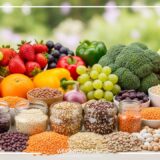Can I Lose Weight Without Exercise
Can I Lose Weight Without Exercise? A Guide to Healthy, Sustainable Weight Loss
The idea that exercise is an indispensable pillar of weight loss is deeply ingrained in our collective consciousness. From fitness magazine covers to social media influencers, the message often resounds: sweat it out, burn those calories, and the weight will melt away. While there’s no denying the myriad health benefits that come with regular physical activity, from improved cardiovascular health to enhanced mood, it leads many to believe that without a rigorous exercise routine, weight loss is simply unattainable. This pervasive belief can be discouraging for individuals who face physical limitations, time constraints, or simply find traditional exercise unappealing.
However, a closer look at the science of weight management reveals a more nuanced picture. While exercise plays a supportive role, it’s not the sole determinant of success. The fundamental principles of weight loss hinge more profoundly on what we consume and how we approach our daily habits. This article aims to challenge the notion that exercise is the only path to a leaner physique, posing the crucial question: Is it really possible to lose weight without exercise? We will explore how strategic dietary choices, mindful eating practices, and a holistic approach to lifestyle factors can indeed lead to healthy, sustainable weight loss, even without stepping foot in a gym.
Understanding the Basics of Weight Loss
To embark on any weight loss journey, whether with or without exercise, it’s crucial to grasp the foundational principle that governs it: the concept of calories in vs. calories out. At its core, weight loss occurs when your body expends more energy (calories) than it consumes. This creates a caloric deficit, prompting your body to tap into its stored energy reserves, primarily fat, for fuel.
Consider this: every food and beverage you consume contains a certain number of calories, which are units of energy. Your body, in turn, burns calories through its basal metabolic rate (the energy needed to maintain basic bodily functions like breathing and circulation), digestion, and physical activity. When the “calories in” consistently exceed the “calories out,” the excess energy is stored, leading to weight gain. Conversely, when “calories out” consistently surpass “calories in,” you experience weight loss.
This brings us to a pivotal point: diet is often a significantly bigger factor than exercise in weight management. While an hour of moderate exercise might burn a few hundred calories, it’s remarkably easy to consume those calories back, and often more, with just one indulgent meal or snack. For instance, a challenging workout might burn 300-500 calories, but a single portion of a high-calorie, processed food item could easily contain 600-800 calories. This imbalance highlights why even dedicated exercisers can struggle with weight loss if their dietary habits are not aligned with their goals.
Furthermore, we need to understand metabolism and energy balance. Your metabolism is the intricate process by which your body converts what you eat and drink into energy. A higher metabolic rate means your body burns more calories at rest.1 While exercise can temporarily boost metabolism, consistent dietary control has a more sustained impact on creating the necessary energy deficit. The goal is to achieve a state of negative energy balance, where your body consistently draws upon its fat stores.
It’s important to clarify common misconceptions, such as the belief that you must work out intensely to see results. While intense workouts certainly accelerate calorie burning, they are not the sole arbiters of weight loss. Focusing on the cumulative effect of a sustained caloric deficit, primarily achieved through dietary modifications, can yield significant and lasting results, even without a strenuous exercise regimen.
The Power of Diet: Your Main Tool
When exercise is not a primary component of your weight loss strategy, the spotlight shines brightly on diet. Your food choices become your most potent tool, directly impacting your caloric intake and your body’s ability to shed excess weight. The key lies in shifting towards a dietary pattern rich in plant-based whole foods: fruits, vegetables, whole grains, legumes, nuts, and seeds.
Let’s delve into the concept of calorie density versus nutrient density. Calorie-dense foods pack a lot of calories into a small volume, often with limited nutritional value. Think of processed snacks, sugary beverages, and refined grain products. Nutrient-dense foods, on the other hand, provide a wealth of vitamins, minerals, fiber, and other beneficial compounds with relatively fewer calories. This is where plant-based whole foods truly shine.
Consider a large bowl of leafy greens with colorful vegetables and a light dressing compared to a small portion of a highly processed dessert. The greens, while voluminous, contain significantly fewer calories and a much higher concentration of essential nutrients. This concept is crucial for weight loss without exercise because it allows you to eat satisfying portions without excessive caloric intake.
A cornerstone of a successful diet for weight loss is emphasizing high-fiber and water-rich foods. Fiber, found abundantly in fruits, vegetables, whole grains, and legumes, adds bulk to your meals, promoting a feeling of fullness and satiety. This natural satiation helps prevent overeating and reduces the urge to snack unnecessarily between meals. Furthermore, fiber slows down digestion, leading to a more gradual release of glucose into the bloodstream, which can help stabilize blood sugar levels and reduce cravings.
Similarly, water-rich foods, such as most fruits and vegetables, contribute to satiety and hydration. Their high water content means they are naturally lower in calories by volume. Think of watermelon, cucumber, and bell peppers – you can consume a significant amount of these without accumulating a high calorie count. This strategic choice helps with portion control naturally, as your stomach registers fullness from the volume of food, rather than solely from the caloric intake.
Crucially, success in weight loss without exercise often hinges on the substantial reduction or elimination of processed foods, added sugars, and refined carbohydrates. These items are typically calorie-dense, nutrient-poor, and highly palatable, making it easy to overconsume them. Processed foods often contain hidden sugars, unhealthy fats, and artificial ingredients that can disrupt satiety signals and contribute to inflammation and weight gain. Sugary beverages, in particular, are a significant source of empty calories that offer no satiety and can lead to rapid blood sugar spikes and subsequent crashes, fueling cravings. Refined carbohydrates, like white bread and pastries, are quickly digested, leading to similar blood sugar fluctuations and a lack of sustained energy. By prioritizing plant-based whole foods and consciously reducing these detrimental items, you lay a robust foundation for effective and sustainable weight loss.
Mindful and Intuitive Eating
Beyond what you eat, how you eat plays a profound role in weight management, especially when exercise isn’t a primary calorie burner. This is where mindful eating comes into play. Mindful eating is the practice of paying full attention to your food and the experience of eating, without judgment. It involves engaging all your senses – noticing the colors, aromas, textures, and flavors of your meal. The benefits extend beyond simply enjoying your food; it fosters a deeper connection with your body’s internal cues.
At its core, mindful eating is about learning to listen to your hunger and fullness cues. In our fast-paced world, it’s common to eat on autopilot, often driven by external factors like the time of day, social settings, or emotional states, rather than genuine physiological hunger. Mindful eating encourages you to pause and ask yourself: Am I truly hungry? What kind of hunger is this – physical or emotional? And once you start eating, it prompts you to recognize when you’ve reached a comfortable level of fullness, rather than pushing to finish everything on your plate. This distinction can be incredibly powerful in preventing overeating, which is a major contributor to weight gain.
Here are some practical tips to cultivate mindful eating habits:
- Eat Slowly: Put your fork down between bites. This simple act forces you to slow down and allows your brain enough time (about 20 minutes) to register that you’re full.
- Avoid Distractions: Turn off the television, put away your phone, and step away from your computer. Dedicate your full attention to your meal. When you’re distracted, you’re more likely to eat past the point of satiety.
- Chew Thoroughly: Savor each bite. Chewing your food more thoroughly not only aids digestion but also allows you to fully experience the flavors and textures, enhancing enjoyment and signaling satiety more effectively.
- Tune into Your Body’s Signals: Before and during your meal, take a moment to assess your hunger level on a scale of 1 to 10 (1 being ravenous, 10 being uncomfortably full). Aim to start eating when you’re moderately hungry and stop when you’re comfortably satisfied, not stuffed.
- Notice How Food Makes You Feel: After eating, observe how different foods impact your energy levels, mood, and digestion. This awareness can guide you towards choices that nourish your body and make you feel good.
By practicing mindful eating, you shift from an external focus on diet rules to an internal wisdom about your body’s needs. This intuitive approach to eating can naturally lead to consuming fewer calories without feeling deprived, making it a cornerstone of sustainable weight loss without relying on rigorous exercise.
Portion Control and Meal Planning
Even the healthiest foods can contribute to weight gain if consumed in excessive quantities. This underscores the critical importance of portion control and meal planning, especially when you’re not actively burning a significant number of calories through exercise. Large portions are a pervasive issue in modern society, with restaurant servings often far exceeding what’s necessary for a single meal. Consistently consuming oversized portions, even of nutrient-dense, plant-based foods, can lead to a caloric surplus and, consequently, weight gain.
The good news is that controlling portions doesn’t have to feel like deprivation. It’s about developing a sensible approach to how much you eat. Here are simple, practical ways to manage portions effectively:
- Use Smaller Plates and Bowls: This is a classic but highly effective trick. A smaller plate naturally makes a serving look more substantial, tricking your brain into feeling more satisfied with less.
- Measure Once, Learn Always: For a period, especially when you’re first starting, consider using measuring cups and a food scale to understand what a true portion size looks like for different foods. Over time, you’ll develop an “eye” for appropriate portions without needing to measure everything.
- The Hand Method: Your hand can be a surprisingly good measuring tool:
- A cupped hand for grains, legumes, or starchy vegetables.
- A fist for fruits or non-starchy vegetables.
- The palm of your hand for plant-based protein sources (like tofu, tempeh, or lentils).
- Divide Your Plate: Visually divide your plate: half with non-starchy vegetables, a quarter with whole grains or starchy vegetables, and a quarter with plant-based protein. This ensures a balanced meal that promotes satiety.
- Eat Slowly (Reiterated): As discussed in mindful eating, eating slowly allows your brain to register fullness, preventing you from going for a second helping out of habit rather than hunger.
Beyond controlling individual portions, meal prepping and planning ahead are invaluable strategies. When you have healthy meals and snacks ready to go, you significantly reduce the likelihood of making impulsive, less healthy food choices due to hunger or lack of time.
- Weekly Meal Planning: Dedicate some time each week to plan out your meals and snacks. This involves deciding what you’ll eat for breakfast, lunch, and dinner, and identifying healthy snacks.
- Grocery Shopping with a List: Once your meals are planned, create a detailed grocery list. Stick to it at the store to avoid impulse buys of processed or high-calorie items.
- Batch Cooking: Cook larger quantities of staples like whole grains (quinoa, brown rice), roasted vegetables, and cooked legumes (lentils, chickpeas) at the beginning of the week. These can be easily assembled into quick meals throughout the week.
- Pre-portioned Snacks: Divide bulk items like nuts, seeds, or chopped fruits and vegetables into single-serving containers. This prevents mindless snacking directly from a large bag.
By proactively managing your portions and planning your meals, you gain significant control over your caloric intake. This deliberate approach to food consumption empowers you to create the necessary caloric deficit for weight loss, without the need for additional calorie expenditure through exercise.
Sleep, Stress, and Hormones
While often overlooked in weight loss discussions, the interconnected roles of sleep, stress, and hormones are profoundly significant, particularly when relying primarily on dietary and lifestyle changes for weight management. These factors can either support or sabotage your efforts, regardless of how meticulously you manage your caloric intake.
Let’s begin with sleep. Chronic poor sleep has been consistently linked to weight gain. When you don’t get enough restorative sleep, your body’s hormonal balance is disrupted. Specifically, sleep deprivation impacts two key appetite-regulating hormones:
- Ghrelin: Often called the “hunger hormone,” ghrelin levels increase when you’re sleep-deprived. Higher ghrelin levels stimulate appetite and promote fat storage.
- Leptin: This is the “satiety hormone,” which signals to your brain that you’re full and should stop eating. When you’re sleep-deprived, leptin levels decrease, meaning your brain doesn’t receive the strong “fullness” signal, leading to continued eating.
The combination of increased ghrelin and decreased leptin creates a hormonal environment that encourages overeating, particularly of high-calorie, carbohydrate-rich foods, and makes it harder to feel satisfied. Furthermore, lack of sleep can lead to increased fatigue, making it harder to make healthy food choices and more prone to seeking quick energy fixes through sugary snacks.
Now, let’s turn our attention to stress. In today’s demanding world, chronic stress is a pervasive issue. When you experience stress, your body releases a cascade of hormones, most notably cortisol, often dubbed the “stress hormone.” While cortisol is essential for your body’s “fight or flight” response, chronically elevated levels can have detrimental effects on weight:
- Increased Appetite and Cravings: High cortisol levels can stimulate appetite, particularly for comfort foods that are high in sugar and unhealthy fats. This is often an evolutionary response to prepare the body for perceived threats, but in modern life, it can lead to emotional eating.
- Fat Storage: Cortisol promotes the accumulation of visceral fat, which is the fat stored deep within the abdominal cavity around your organs. This type of fat is metabolically active and is strongly linked to an increased risk of chronic diseases.
- Insulin Resistance: Chronic stress can also lead to insulin resistance, a condition where your body’s cells don’t respond effectively to insulin. Insulin is the hormone responsible for transporting glucose from your bloodstream into cells for energy. When cells are resistant to insulin, more insulin is produced, and excess glucose is more likely to be stored as fat.
The interplay of these hormones creates a complex environment that can make weight loss incredibly challenging, even with diligent dietary efforts. Therefore, prioritizing strategies to improve sleep and reduce stress is not merely about well-being; it’s a direct intervention in your weight management journey.
Here are practical tips for improving sleep and reducing stress:
- Establish a Consistent Sleep Schedule: Go to bed and wake up at roughly the same time each day, even on weekends. This helps regulate your body’s natural2 sleep-wake cycle (circadian rhythm).
- Create a Relaxing Bedtime Routine:3 An hour before bed, wind down with activities like reading, taking a warm bath, or listening to calming music. Avoid screens (phones, tablets, computers) as the blue light can interfere with melatonin production.
- Optimize Your Sleep Environment: Ensure your bedroom is dark, quiet, and cool.
- Mindfulness and Meditation: Even 5-10 minutes of daily meditation or deep breathing exercises can significantly reduce stress levels and improve sleep quality. There are many free apps and guided meditations available.
- Herbal Teas: Certain herbal teas like chamomile, lavender, or passionflower can promote relaxation and aid sleep.
- Digital Detox: Regularly unplug from digital devices, especially in the evenings. The constant stimulation and notifications can contribute to stress and disrupt sleep.
- Nature Exposure: Spending time in nature, even a short walk in a park, has been shown to reduce stress hormones.
- Hobbies and Self-Care: Engage in activities you enjoy that provide a sense of calm and pleasure. This could be painting, listening to music, gardening, or spending time with loved ones.
By addressing sleep and stress, you create a more harmonious internal environment, allowing your hormones to function optimally and supporting your body’s natural inclination towards a healthy weight.
Hydration and Its Role in Weight Loss
The simple act of drinking enough water is a surprisingly potent, yet often underestimated, ally in the quest for weight loss, particularly when exercise isn’t a primary focus. Water is essential for countless bodily functions, from metabolism to nutrient transport, and its strategic consumption can directly support weight management.
One of the primary ways hydration aids weight loss is by addressing a common biological miscue: thirst is often confused with hunger. Our bodies sometimes send similar signals for both, leading us to reach for a snack when what we truly need is a glass of water. Before reaching for food, especially if it hasn’t been long since your last meal, try drinking a large glass of water. Wait 10-15 minutes, and often, the “hunger” pangs will dissipate, revealing that you were simply thirsty. This simple habit can prevent unnecessary caloric intake from snacking.
Beyond this, water contributes to a feeling of fullness. Drinking water before meals can help reduce overall food intake. When your stomach is partially filled with water, there’s less room for solid food, which can naturally lead to smaller portions and reduced calorie consumption.
Here are some practical tips to leverage hydration for weight loss:
- Start Your Day with Water: Begin your morning with a large glass of water to rehydrate your body after sleep and kickstart your metabolism.
- Drink Water Before Meals: Aim to drink one or two glasses of water approximately 15-30 minutes before each main meal. This can help with satiety and reduce the amount of food you consume.
- Carry a Reusable Water Bottle: Make hydration convenient by always having water readily available. Seeing your water bottle can also serve as a visual reminder to drink.
- Infuse Your Water: If plain water feels boring, add natural flavors with slices of fruit (lemon, lime, berries), cucumber, or fresh mint leaves. This makes it more appealing without adding calories.
- Choose Water Over Sugary Drinks: This is a crucial swap. Sugary beverages (sodas, sweetened juices, energy drinks) are a major source of empty calories that contribute to weight gain without offering any nutritional value or satiety. Opting for water instead drastically cuts down on hidden calories.
- Incorporate Broth-Based Soups (Vegetarian): Starting a meal with a vegetarian broth-based soup is another excellent way to fill up on a low-calorie, high-volume food. The water content of the broth, combined with vegetables, can significantly enhance satiety and reduce the likelihood of overeating the main course.
By making conscious efforts to stay well-hydrated throughout the day, you not only support vital bodily functions but also strategically manage your appetite and caloric intake, making it a powerful yet effortless tool in your weight loss journey without relying on intense exercise.
Non-Exercise Physical Activity
While the premise of this article is weight loss without structured exercise, it’s essential to acknowledge the continuous energy expenditure that occurs throughout your day beyond intentional workouts. This is known as NEAT (Non-Exercise Activity Thermogenesis), and it encompasses all the calories you burn from activities that are not formal exercise, sleeping, or eating. NEAT can be a significant contributor to your daily caloric output and plays a crucial role in maintaining energy balance, especially when you’re not engaging in intense workouts.
The beauty of NEAT is that it’s incremental. Small movements throughout the day, when added up, can surprisingly contribute to a substantial caloric burn over time. Think of it as a series of micro-workouts integrated into your daily routine.
Here are examples of how to increase your NEAT:
- Walk While Talking on the Phone: Instead of sitting, pace around your office or home during phone calls.
- Take the Stairs: Opt for stairs instead of elevators or escalators whenever possible. This provides a mini-workout for your legs and glutes.
- Park Further Away: When driving, park at the furthest end of the parking lot to get in some extra steps.
- Stand More, Sit Less: If you have a sedentary job, consider a standing desk or take regular breaks to stand up and stretch. Even fidgeting while sitting can contribute to NEAT.
- Light Chores and Gardening: Activities like vacuuming, dusting, doing laundry, or gardening are all forms of NEAT that burn calories and keep you moving.
- Stretch and Move During Breaks: Instead of just sitting during commercial breaks or work pauses, stand up, stretch, or do a few gentle movements.
- Walk or Cycle for Errands: If destinations are within a reasonable distance, consider walking or cycling instead of driving.
- Engage in Active Leisure: Instead of passive entertainment like watching TV, choose more active hobbies like playing with pets or children, dancing to music, or light recreational walks.
- Pacing or Fidgeting: Believe it or not, even subtle movements like tapping your foot, shifting in your chair, or pacing while thinking contribute to NEAT.
The key takeaway is that every little bit of movement counts. While individual NEAT activities might not burn hundreds of calories at once, their cumulative effect over a day, a week, or a month can be considerable. By consciously seeking opportunities to move more throughout your day, even without a formal exercise routine, you can increase your overall energy expenditure, supporting your weight loss goals and improving your general well-being. It’s about building a more active lifestyle, one small movement at a time.
Tracking Progress Without the Scale
For many, the bathroom scale is the ultimate arbiter of weight loss success. However, relying solely on the scale can be incredibly misleading, frustrating, and even demotivating, especially when your focus is on healthy, sustainable changes without intense exercise. Weight fluctuates naturally due to hydration levels, hormonal shifts, recent food intake, and even time of day. A single number on the scale doesn’t tell the whole story of your body composition or overall health progress.
When you’re focusing on dietary and lifestyle changes, your body is likely undergoing subtle yet significant transformations that the scale might not immediately reflect. Building muscle (even through NEAT and daily activities) while losing fat can result in a static or even slightly increased scale weight, despite a positive change in body composition. This is why it’s crucial to adopt a broader perspective on measuring success.
Here are other, often more accurate and encouraging, ways to measure your progress:
- How Your Clothes Fit: This is perhaps the most tangible and rewarding indicator of progress. If your clothes are looser, or you’re fitting into a smaller size, you are definitely losing inches and likely fat, regardless of what the scale says. Keep a “goal outfit” that you want to fit into.
- Energy Levels: As you nourish your body with whole foods and improve sleep and stress management, you should experience a noticeable increase in sustained energy throughout the day. This is a vital sign of improved health and metabolic function.
- Mood and Mental Clarity: A healthier diet and lifestyle often lead to improved mood, reduced anxiety, and enhanced mental clarity. Pay attention to how you feel emotionally and cognitively.
- Waist Measurement: Measuring your waist circumference provides a good indication of visceral fat loss, which is crucial for health. Use a soft tape measure around the narrowest part of your waist (just above your belly button) and track it monthly. You might not see the scale move, but your waist measurement could be shrinking.
- Improved Sleep Quality: As discussed, better sleep is integral to weight management. Notice if you’re falling asleep more easily, sleeping more soundly, and waking up feeling refreshed.
- Digestive Health: A diet rich in plant-based whole foods, especially fiber, should lead to more regular and comfortable digestion.
- Skin and Hair Health: Nutritional improvements can often manifest in healthier skin and shinier hair.
- Photographic Progress: Take progress photos (front, side, and back) every few weeks or once a month. Sometimes, visual changes are more apparent when compared side-by-side over time than in a mirror daily.
- Strength and Mobility: Even without formal exercise, consistent movement and improved body composition can lead to increased functional strength (e.g., carrying groceries more easily, climbing stairs without getting winded) and greater flexibility.
By diversifying your methods of tracking progress, you create a more holistic and encouraging picture of your journey. This approach helps maintain motivation, celebrates non-scale victories, and provides a truer reflection of your overall health and transformation, allowing you to focus on sustainable lifestyle changes rather than the fleeting number on a bathroom scale.
Common Pitfalls and How to Avoid Them
Even with the best intentions and a solid understanding of dietary principles, the journey of weight loss without exercise is not without its challenges. Recognizing common pitfalls and proactively developing strategies to navigate them can significantly increase your chances of sustainable success.
1. Emotional Eating and Boredom Eating:
This is perhaps one of the most pervasive obstacles. We often turn to food not out of physical hunger, but to cope with emotions (stress, sadness, anger, loneliness) or simply out of boredom. These urges can derail even the most well-structured eating plan.
- How to Avoid: Practice mindful eating (as discussed earlier) to distinguish between physical and emotional hunger. Keep a food and mood journal to identify triggers. Develop alternative coping mechanisms for emotions that don’t involve food: go for a short walk (NEAT!), call a friend, read a book, listen to music, meditate, or engage in a hobby. For boredom, plan non-food activities to fill idle time.
2. Skipping Meals and Bingeing Later:
The logic might seem appealing: if I skip a meal, I’ll save calories. However, this often backfires spectacularly. Skipping meals can lead to extreme hunger, blood sugar crashes, and an overwhelming urge to binge later, often on highly palatable, calorie-dense foods.
- How to Avoid: Aim for regular, balanced meals and snacks throughout the day. This keeps your blood sugar stable and prevents you from becoming ravenously hungry. Meal planning and preparation (as discussed) are key to ensuring you have healthy options readily available. If you anticipate a long gap between meals, plan a healthy, portion-controlled snack like a piece of fruit and a handful of nuts.
3. Falling into Fad Diets or Overly Restrictive Eating:
The allure of quick fixes is strong, leading many to jump from one restrictive fad diet to another. These diets often promise rapid weight loss but are typically unsustainable, nutritionally unbalanced, and can lead to a cycle of deprivation, cravings, and rebound weight gain. Overly restrictive eating can also foster an an unhealthy relationship with food.
- How to Avoid: Focus on sustainable, nutrient-dense eating. Instead of “dieting,” think of it as adopting a healthy, lifelong eating pattern centered on whole, plant-based foods. Prioritize gradual, consistent changes over drastic, temporary ones. Understand that true weight loss is a marathon, not a sprint. If a diet eliminates entire food groups or feels overly complicated, it’s likely not sustainable. Seek information from reputable sources and, if needed, consult with a qualified nutritionist or dietitian for personalized guidance.
4. Social Pressures and Peer Influence:
Dining out with friends or family, or attending social gatherings, can present challenges. It can be difficult to stick to your healthy eating plan when surrounded by tempting foods and social pressure to indulge.
- How to Avoid: Plan ahead. Look at restaurant menus online beforehand to identify healthy options. Don’t arrive ravenous. Eat a small, healthy snack before you go. Don’t be afraid to politely decline second helpings or unhealthy offerings. Focus on the social interaction rather than the food. Offer to bring a healthy, plant-based dish to gatherings.
5. Lack of Consistency and Patience:
Weight loss, especially without the accelerated calorie burn of intense exercise, requires patience and consistent effort. Many people give up if they don’t see immediate results or if they hit a plateau.
- How to Avoid: Understand that progress isn’t linear. There will be weeks where the scale doesn’t budge or even goes up slightly. Focus on the long-term journey and celebrate small, non-scale victories. Revisit your “why.” Remind yourself of your health goals and the benefits of your new lifestyle. If you have an off day or week, don’t let it derail you completely. Get back on track with the next meal or the next day. Consistency, not perfection, is the key to sustainable success.
By anticipating these common pitfalls and arming yourself with proactive strategies, you can build resilience and maintain momentum on your weight loss journey, proving that sustainable results are achievable without the need for rigorous exercise.
Final Thoughts
The pervasive notion that intense exercise is an absolute prerequisite for weight loss often casts a shadow of discouragement over those unable or unwilling to engage in strenuous physical activity. However, as we have thoroughly explored, the resounding answer to the question “Can I lose weight without exercise?” is a definitive yes. It is not only possible but can also lead to highly sustainable and deeply rooted health improvements.
The core principle lies in recognizing that weight management is predominantly a function of energy balance – calories in versus calories out. While exercise contributes to the “calories out” side, it is your dietary intake that holds the most significant leverage. By prioritizing plant-based whole foods – an abundance of fruits, vegetables, whole grains, legumes, nuts, and seeds – you naturally shift towards nutrient-dense, fiber-rich, and water-rich options that promote satiety while keeping calorie counts in check. This strategic approach to food choices is your most powerful tool.
Beyond what you eat, how you eat is equally vital. Cultivating mindful and intuitive eating habits allows you to truly listen to your body’s hunger and fullness cues, preventing mindless overconsumption. Complementing this with diligent portion control and proactive meal planning ensures that even healthy foods contribute to a caloric deficit rather than a surplus.
Furthermore, a holistic approach to lifestyle factors plays a critical, often underestimated, role. Addressing the profound impact of sleep quality and stress levels on your hormones – particularly ghrelin, leptin, cortisol, and insulin – can create an internal environment conducive to weight loss. Prioritizing restful sleep and effective stress reduction techniques is not merely about well-being; it’s a direct intervention in your body’s metabolic efficiency. The simple yet potent power of hydration, ensuring you drink enough water, can also significantly aid in appetite management and overall bodily function.
Finally, while formal exercise might be absent, embracing Non-Exercise Activity Thermogenesis (NEAT) allows for continuous, incremental calorie expenditure through daily movements. And critically, moving beyond the sole reliance on the bathroom scale to track progress through non-scale victories – how clothes fit, increased energy, improved mood, and waist measurements – provides a more accurate, holistic, and motivating picture of your transformation.
The journey to a healthier weight, without the emphasis on exercise, is about embracing small, consistent steps. It’s about empowering yourself with knowledge, making conscious choices, and fostering a nurturing relationship with your body and food. Focus on health, not just the number on the scale, and you will find that sustainable weight loss is not just a possibility, but a tangible and empowering reality.


















